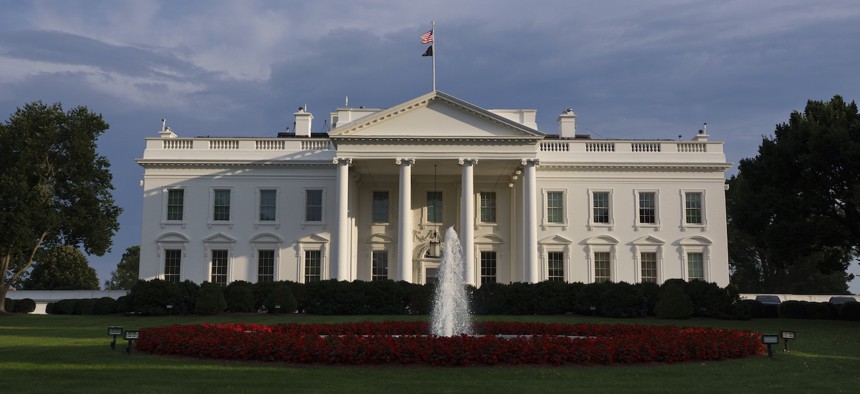
In March, President Trump signed an executive order citing a seldom-used provision of the 1978 Civil Service Reform Act to strip two-thirds of federal employees of their collective bargaining rights, on the grounds of national security. Kevin Carter/Getty Images
Legal challenges against Trump’s union EOs continue to proliferate
The International Federation of Professional and Technical Engineers has filed its second lawsuit seeking to block President Trump’s effort to strip collective bargaining rights from two-thirds of the federal workforce, this time on behalf of NASA workers.
A federal employee union last week filed its second lawsuit against the Trump administration over its efforts to outlaw collective bargaining at most federal agencies, arguing that the White House targeted National Aeronautics and Space Administration workers in response to the labor group’s vow to fight anti-union actions at other federal agencies.
In March, President Trump signed an executive order citing a seldom-used provision of the 1978 Civil Service Reform Act to strip two-thirds of federal employees of their collective bargaining rights, on the grounds of national security. The International Federation of Professional and Technical Engineers in July challenged that edict on behalf of its bargaining units within the Defense Department, alleging First and Fifth Amendment violations stemming in part from Defense Secretary Pete Hegseth’s exemption of four small independent bargaining units from the labor ban.
Then, in August, Trump signed another executive order amending the March edict to declare around half a dozen additional agencies as having primarily national security work and similarly outlaw unions, including NASA, the U.S. Agency for Global Media and the National Weather Service.
In IFPTE’s latest lawsuit, filed last week in the U.S. District Court for the District of Columbia, the union argues that NASA’s workforce was targeted in the second executive order because the national union was publicly opposed to the initial executive order, and its NASA affiliate had filed more than 20 grievances against the agency and requested to bargain over workplace policy changes 17 times since March.
And, like other lawsuits challenging the August executive order, IFPTE argued that the president’s declaration that NASA is engaged in national security work is belied by the agency’s own authorizing statute, as well as Trump’s establishment of the U.S. Space Force in 2019.
“Indeed, the National Aeronautics and Space Act, which was first enacted in 1958 and amended most recently in 2017, established and created NASA and provides specifically that ‘it is the policy of the United States that activities in space should be devoted to peaceful purposes for the benefit of all humankind,” the union wrote. “[Significantly], not only is NASA’s mission unrelated to national security, the National Aeronautics and Space Act clearly removes primary national security and defense functions from NASA, stating that: ‘activities peculiar to or primarily associated with development of weapons systems, military operations, or the defense of the United States . . . shall be the responsibility of, and shall be directed by the Department of Defense.”
IFPTE’s lawsuit comes less than two weeks after U.S. District Judge Paul Friedman issued a preliminary injunction restoring union rights at the union’s bargaining units that were targeted under the March executive order. Although the latest lawsuit has been assigned to U.S. District Judge Carl Nichols, a Trump appointee, it likely will be reassigned to Friedman, as he has handled all cases filed in Washington, D.C., related to the two union edicts.
Share your news tips with us: Erich Wagner: ewagner@govexec.com; Signal: ewagner.47
NEXT STORY: Top cyber lawmaker wants answers on CISA workforce reductions







